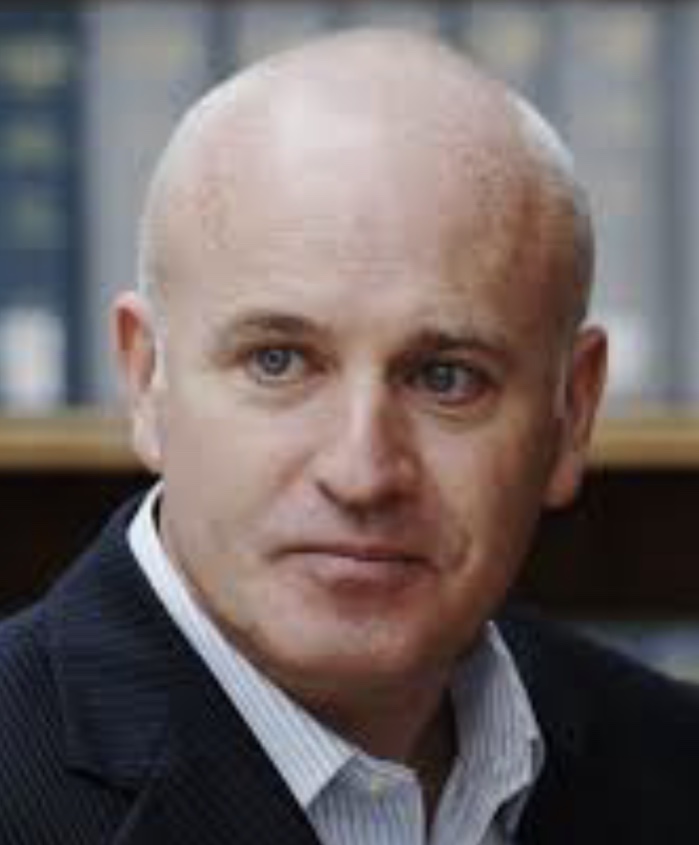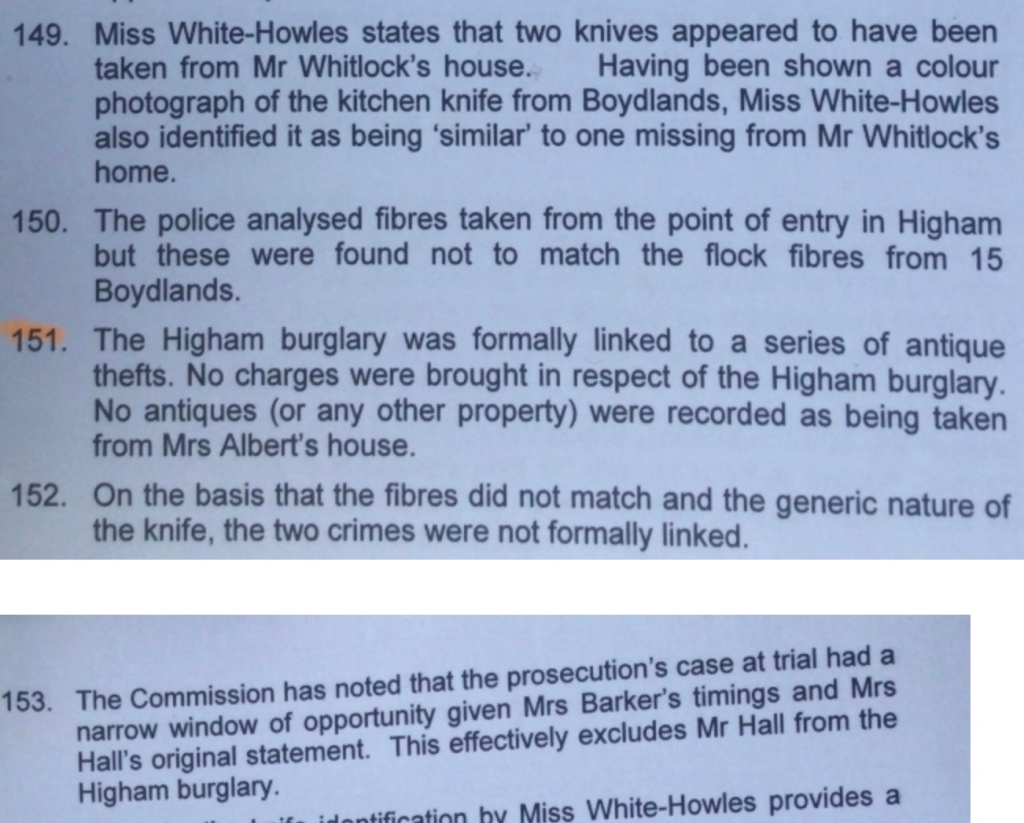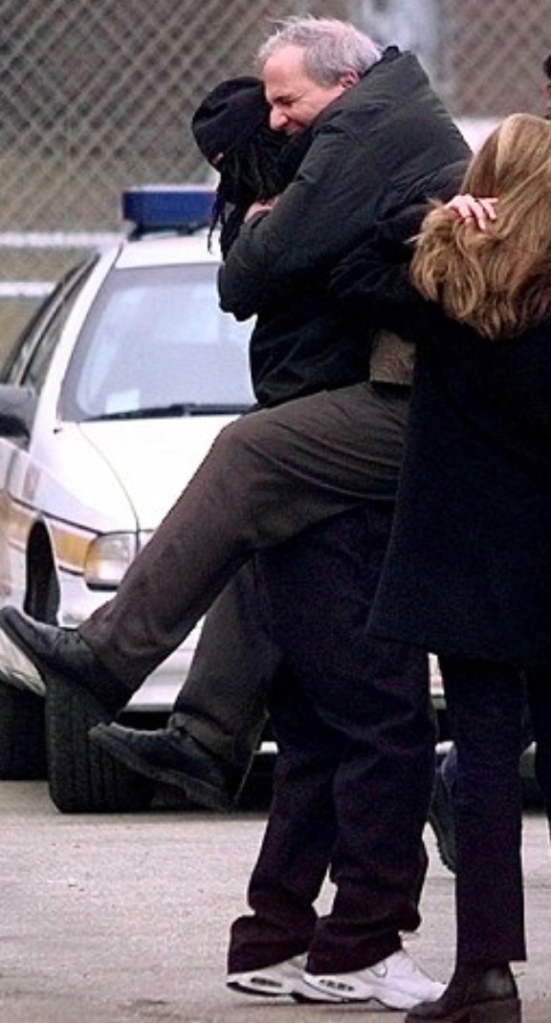I think it’s clear that exonerations can be the result of fraud or misconduct on the part of post-conviction activists and litigators
John M Collins Jr
The majority of the people in the cult-like “wrongful conviction” movement will not acknowledge or address the innocence fraud phenomenon.
Not only do these people seem to not want to acknowledge and address this very real phenomenon, they do not to want to recognise and address their own failures and errors.
The majority of the people and organisations who were once associated with killer Simon Hall’s fraudulent public relations (PR) spin campaign and innocence fraud did not, and do not, appear to posses the humility to admit they were wrong or how, why and where exactly they went wrong.

Keir Starmer Makes The Evidence Disappear
Before becoming the director of public prosecutions and head of the crown prosecution service (CPS) in 2008, the now leader of the labour party Keir Starmer appeared in the last ever BBC Rough Justice TV show.
The Rough Justice TV show was called The Innocents’ Brief and aired in April 2007 and featured the case of actual, factual guilty killer Simon Hall.
During the TV show Keir Starmer stated the following;
Simon Hall’s case is really peculiar because there is no particular reason to believe he is guilty of this offence.
The one crucial link is the fibre evidence.
Break this and the case disappears
Labour MP Keir Starmer via Rough Justice TV show – April 2007
On the 23rd of November 2006 Bristol university students had met with Keir Starmer at Doughty Street Chambers in London where “he raised an issue regarding the absence of statistical probabilities in the fibre evidence given by Judith Cunnison”.
Why didn’t Keir Starmer point out to the students that killer Simon Hall and the Hall family’s concoctions were a “crucial” part of the case against Simon Hall?
Campbell Malone
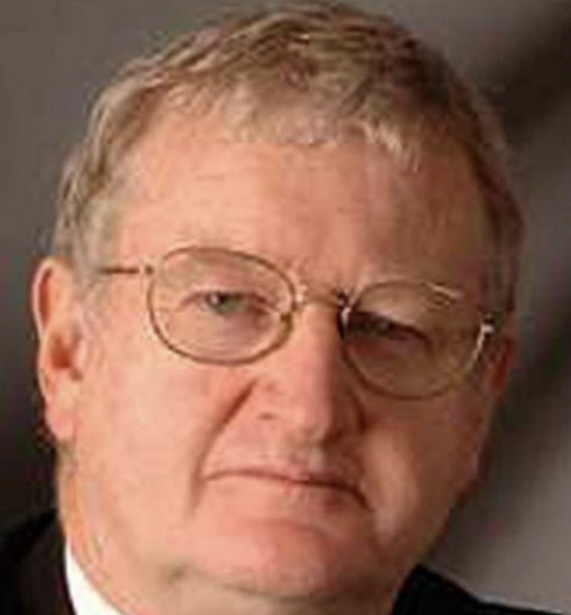
Campbell Malone, who was Simon Hall’s solicitor also appeared in the BBC Rough Justice TV show.
The following year Linda Tsang wrote a media article which was headed Lawyer of the week: Campbell Malone and asked Campbell Malone the following question;
What was your worst day as a lawyer?
Linda Tsang
Campbell Malone’s response was;
There have been a few.
It’s losing those cases you believe should not have been lost. The outstanding convictions of Susan May and Eddie Gilfoyle have to rank among the worst unresolved miscarriages of justice there have been.
And to lose those cases in the Court of Appeal, when there were compelling arguments as to why the convictions should have been quashed, still deeply troubles me.
But I know those cases will eventually come back before the Court of Appeal.
Campbell Malone – from article by Linda Tsang for The Times headed Lawyer of the week: Campbell Malone dated the 20th May 2008
Hilda Marchbank (89) was murdered by her niece Susan May on the 11th of March 1992 and Paula Gilfoyle (32), who was 8 1/2 months pregnant at the time, was murdered on the 4th of June 1997 by her husband Eddie Gilfoyle.
The killers of Hilda Marchbank and Paula Gilfoyle have both been unsuccessful at the court of appeal and both killers fraudulent public relations campaigns and cases, bare all the hallmarks of the innocence fraud phenomenon.
Criminal Cases Review Commission
Three months before the criminal cases review commission’s (CCRC) announcement that they were referring killer Simon Hall’s murder conviction back to the court of appeal (CoA), Campbell Malone was quoted by the Guardian;
“What worries me is that to an unusually substantial degree this case turns on one area of evidence – fibre evidence” said Hall’s lawyer, Campbell Malone.
“There are, on the one hand, other potential explanations for the transfer of the fibres, and there are question marks about the reliability of the fibre evidence that we would expect to support it, which has troubled me.
Also, we are aware that there has been continuing research in the approach to be taken with fibre evidence, which has moved on from the way that evidence was gathered and presented in [Hall’s] case”
Campbell Malone via an article by Natalie Hanman for the Guardian dated the 21st of July 2009
Campbell Malone was described on Twitter as “our appeals supremo” by Stephensons solicitors, following the CCRC’s announcement that they had referred Simon Hall’s murder conviction back to the CoA in 2009;
A 2010 media article quoted Campbell Malone;
This is a worrying conviction based almost exclusively on fibre evidence.
“There is no doubt this was a violent murder, but we believe fresh evidence now emerging points away from Simon.
It follows that someone else was responsible and we would ask anyone with information to call us on 01942 777777”
By Tom Parkes* for the Colchester Gazette article headed
Convicted of murder…but ‘innocent’ man seeks freedom dated the 16th of March 2010
Note: *Tom Parkes article falsely stated that Simon Hall’s then wife Stephanie (Hall) “met him when they both worked at a company in East Hill, Colchester”. Simon Hall met Stephanie Bon at a company in East Hill, Colchester not Stephanie (Hall).
Correna Platt
Correna Platt who trained under Campbell Malone, began representing killer Simon Hall after Campbell’s semi retirement just before Simon Hall’s appeal was heard in December 2010.

Corenna Platt made a statement following the court of appeals decision to uphold Simon Hall’s murder conviction;
His legal team are concerned by the approach taken by the Court in coming to this decision.
It was agreed by all that this conviction rested entirely on expert evidence relating to fibre evidence and there is much other evidence that pointed away from Simon’s guilt.
Corenna Platt of Stephenson’s solicitors here
Simon Spence

As questioned in previous Parts of the this blog series, it is still not known why Simon Spence seemingly did not point out to the CoA judges that the CCRC had cherry picked from the prosecutions closing speech from killer Simon Hall’s February 2003 trial.
The CCRC, and seemingly the CoA judges were seen to be able to magic away the Hall families “concocted” evidence, which again Graham Parkin the prosecution barrister had stated during the February 2003 was “woven into the general framework of the case”.
Jon Robins

Four months before the innocence fraud scam related to actual, factual guilty killer Simon Hall began to unravel, Jon Robins published an article to his website under the header Wrongly accused: a need for ‘imagination and outrage, which also included statements made by Campbell Malone;
“We’re back where we were in the late 1980s”, argued Campbell Malone, the veteran defence lawyer and miscarriage of justice campaigner at a debate in Manchester last week.
“We have a conservative and cautious Court of Appeal which has a deep-rooted scepticism of what they regard as the miscarriage of justice industry. That is supported by a lack of interest in the media”.
Campbell Malone, a consultant with Stephensons solicitors, was talking at the second debate about Wrongly accused: Who is responsible for investigating miscarriages of justice?
By Jon Robins for the Justice Gao article headed dated
Two Months Before The Innocence Fraud Scam Began To Unravel
Campbell Malone continued to act as a “criminal appeals consultant” for Stephensons solicitors and published a blog in September 2012, two months before killer Simon Hall and Jamie Barker’s Zenith Windows burglary became known about by his then wife Stephanie (Hall).
Stephensons solicitors indicated to Stephanie (Hall) that killer Simon Hall’s Zenith Windows burglary “omission” would not alter Simon’s “position” as an appellant.
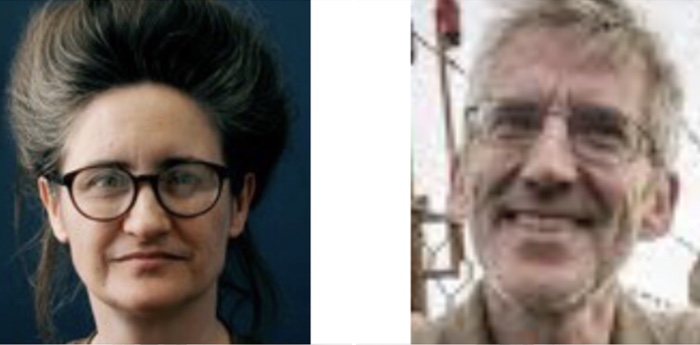
Campbell Malone’s blog was headed Where lies the truth in criminal defence cases? and included a reference to Clive Stafford Smith, husband of Emily Bolton who has promoted the innocence fraud of people like violent rapist and con man Andrew (Andy) Malkinson.
Tap on the button below for the index to the ongoing blog series on violent rapist Andrew Malkinson and his spin campaign;
Campbell Malone’s blog also made reference to a book headed “Where Lies the Truth” by Michael O’Connell, as well as the conviction of George Kelly, who murdered Leonard Thomas and John Catterall in 1949 and was executed on 28 March 1950.
The CCRC also referred George Kelly’s murder conviction was also referred to the CoA, who quashed his conviction posthumously, deeming his conviction ‘unsafe’.
An unsafe conviction however does not equate to factual innocence and it’s possible the CCRC used the same (or similar) deceptive tactics they used when they referred Simon Hall’s murder conviction in 2009.
Towards the end of 2012 Simon Hall decided to dispose of the services of his solicitor Corenna Platt and Michael Naughton from Bristol university became his representative instead.
It was during the time that Michael Naughton represented killer Simon Hall, that his factual guilt to his murder of Joan Albert began to unravel and was eventually exposed.
John Curtis

In 2015 John Curtis, who was the CCRC’s case review manager for killer Simon Hall, wrote an article which was shamefully headed Righting Wrongs.
John Curtis stated on the CCRC;
The Commission’s contribution to society is important.
Miscarriages of justice remain a reality, as are the challenges to the organisation charged with their investigation
Excerpt by John Curtis for Counsel magazine article headed Righting wrongs dated the 12th of January 2015
In 2016 Corenna Platt went on to take part in a two part BBC TV show called Conviction: Murder at the Station with Louise Shorter, which promoted the innocence fraud of Paula Poulton’s killer.


